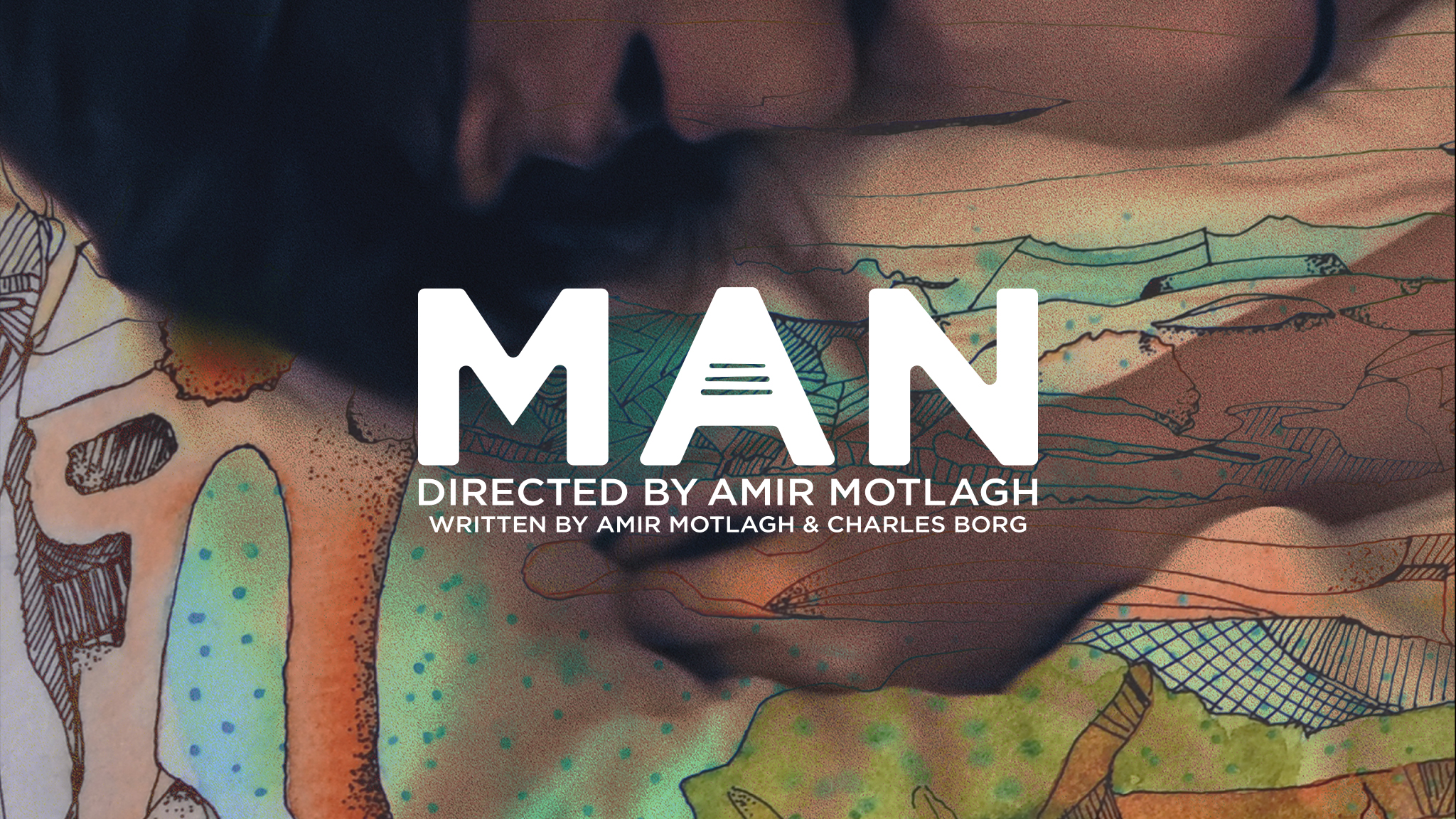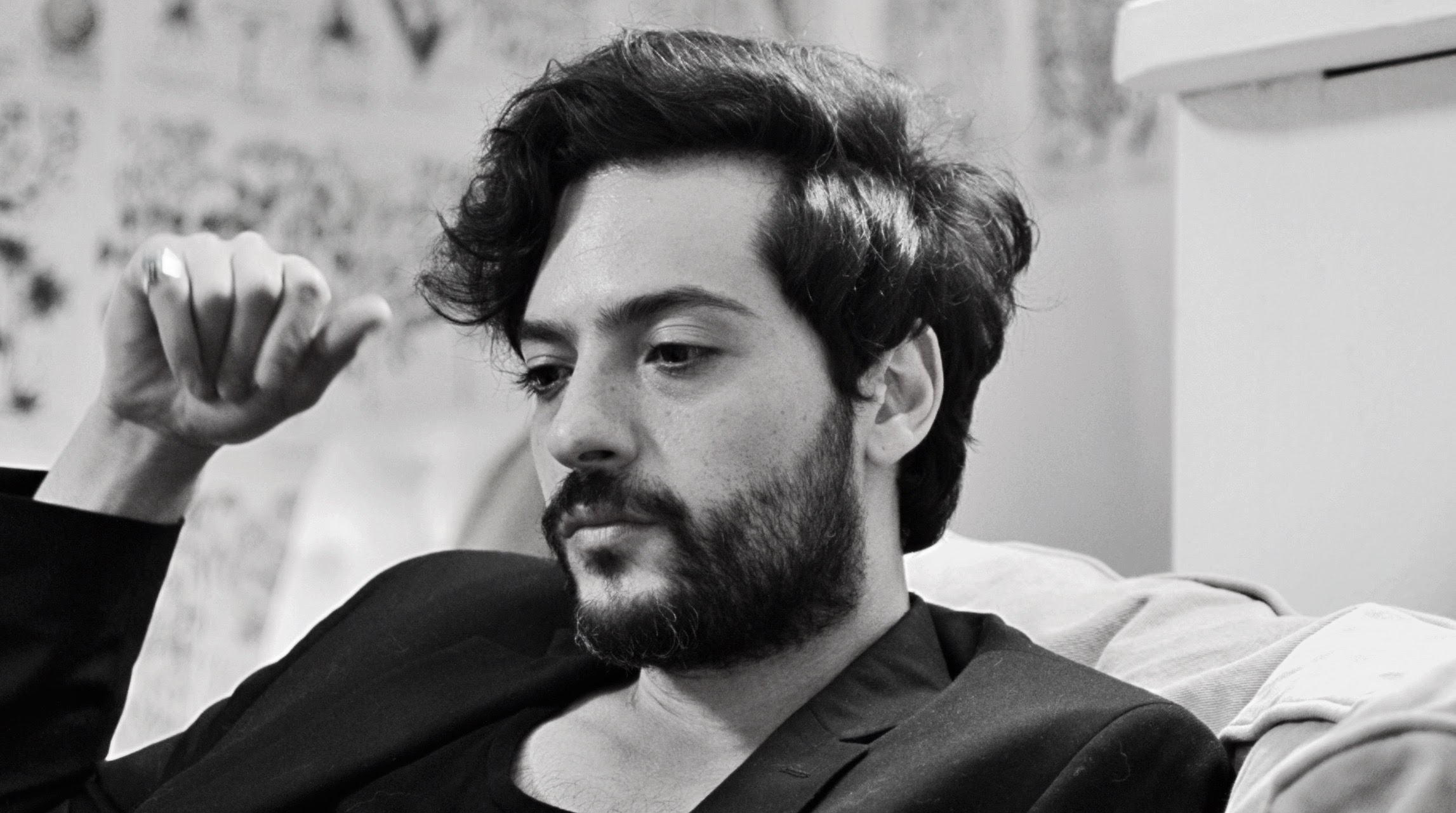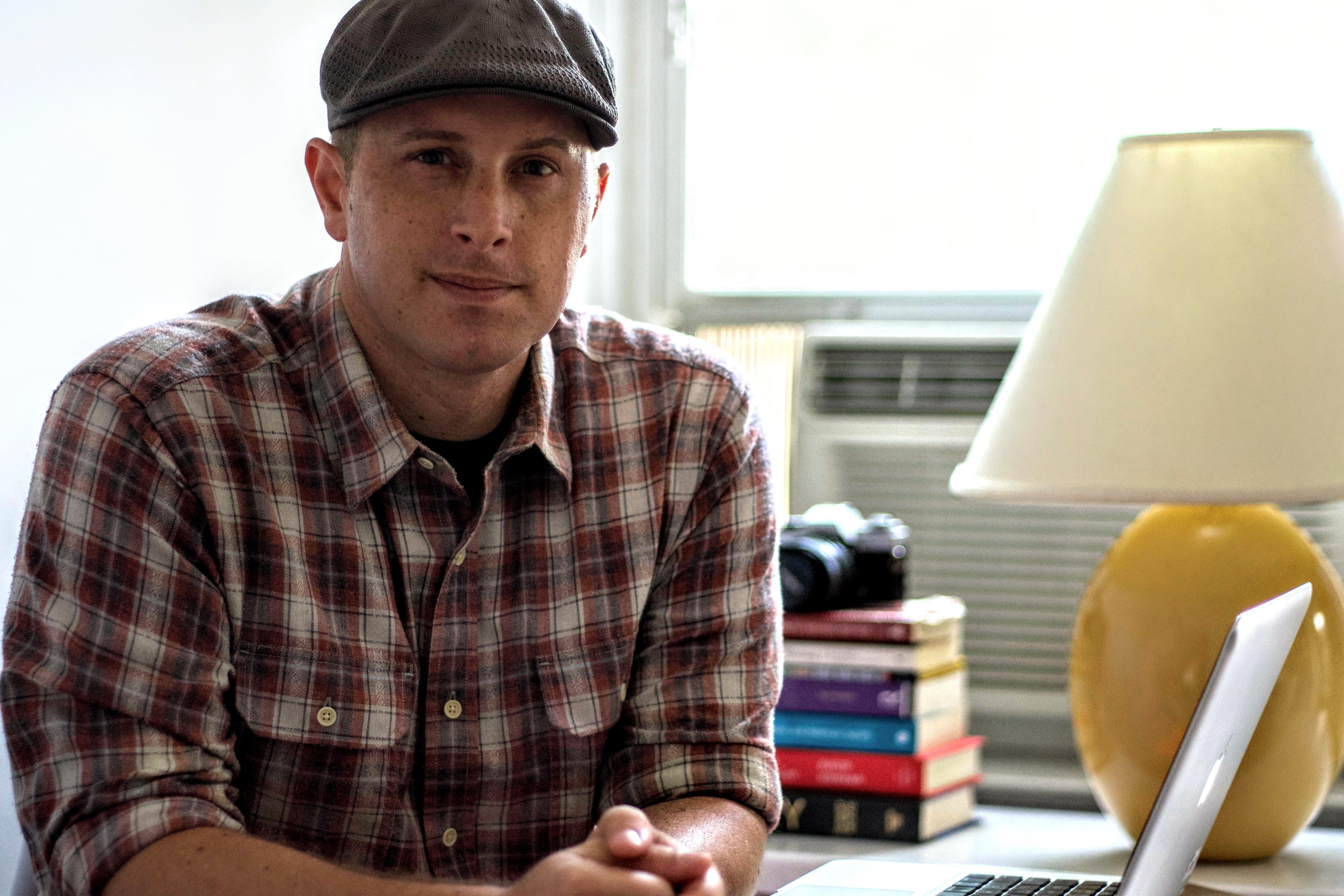Charles Borg is a two-time Script Pipeline Screenwriting finalist. He partnered with director Amir Motlagh for the indie feature MAN in 2017.
We live in an era now where screenwriters are oftentimes told to “write to the market” (which I think is ambiguous and largely misinterpreted advice, but. . . the catchphrase persists). MAN is clearly a passion project that takes a fresher approach to character—and audience—perspective, putting us literally into the lens of the lead with a camera mounted to the actor. As a script, there’s no real way this could work on paper. It has to be seen to be appreciated.
What made you decide to pursue this idea and this approach, seemingly counter to the norms of Advice Factories who’d likely recommend against producing such an experimental film?
Amir: Possibly the easiest analogous I have to this question is a non-fiction 1970s book by Studs Terkel called Working. In it, he describes everyday Americans going to work. This book, on paper, or as a pitch, would seem completely uninspired. But once you read it, it’s a compelling, engaging look at ordinary American lives that is hard to put down. With MAN, the outline and original genesis of the idea were strong for us, and we knew that we could rely on other cinematic things to keep it engaging.
One of the initial questions was, “what if this movie was made in the 1950s?” Both Charles and I concluded that it would age well as it would act like a specific timestamp for a specific zeitgeist and culture. We took a leap of faith and structured it around an idea of “experiential hypnosis” to keep a viewer compelled to continue watching. Over the last two decades, as digital took over traditional film, and with that, a whole new audience completely understanding of visual language, I’ve become exceedingly drawn to works that do things a bit differently and approach the process of media creation bottom up. If you believe in a vision and have the drive to see through its execution, it’s worth the effort. But I think it must be in your blood to go this route, or even a learned behavior. My background was foreign cinema, and internationally, scripts function a bit different. Whereas in the West the script is always a starting point, in much great foreign cinema, the script is one component of the whole. Every story has interesting possibilities.
Charles: Amir and I wanted to make a film nobody had seen before. We never worried about whether or not people would like MAN. Our aim was to affect people and subvert a very familiar medium, hence the POV camera mount on the main character. We knew if we couldn’t meet our own expectations that we weren’t going to make MAN. It was that simple. You live with a film for a long time, and we knew it had to be made without comprise. Developing the story had nothing to do with thinking outside-the-box. We were already doing that. We knew what we wanted to say, it was simply a matter of figuring out the most inspired way of communicating the idea for an audience we knew would be marginal, but appreciative.
With such an intimate, contained story, it almost seems like the script was built around this would-be couple. Was that the case? And Amir, did you need to click with the actress, or perhaps it was better-suited if you didn’t, given the on-screen relationship?
Amir: Charles and I knew that without a female lead who was completely in the moment, this would never work. Having worked with Rachel Sciacca many years prior, I knew she would be the right person to cast as Des, as she has an effortless way in front of the camera. When we knew she would commit to the project, we went about outlining points of movement between the characters. We borrowed personalities and preferences and built it around that.
Two things were necessary: trust between Rachel and me, and her ability to build a new identity between us in the film. I think in this scenario, we had to click in real life before we could re-create the other fictional one in the film.
Charles: The human interaction in the story, midway, is the culmination. The film’s primary focus is on exploring man’s relationship with technology, on a macro level. We start with nature, then introduce technology. It’s a build until the lead character is present with another human being and we see how technology has become an integral part of their interaction. I mentioned this was a time-capsule piece, reflecting OUR time. The choice to have HER come over to HIS house wasn’t one of convenience. It HAD to be this way to properly reflect the modern dynamic that exists between men and women that wouldn’t have existed, say, 40 years ago. It’s likely the man would have gone to see the woman, and it would have been a bit more formal. Probably dinner and drinks, then a movie. They probably would have met each other at a barbecue or an office party, definitely not an online app. The seemingly unimportant details of the film, like the characters constantly on their phones, is capturing, precisely, what we are today as people intertwined with technology. If we made a follow up to MAN 40 years from now I wonder what that reality would look like. . . .
Whether you call it cinéma vérité, neo-realism, or any other variation, the hurdle every writer and director faces in this genre is how to make it compelling without a lot of the conventions of typical genre structure. Was the film meticulously planned, or was a lot of it improvised? How much traditional “directing” was implemented, since Amir had to shoulder both roles, lead actor and director?
Amir: The film’s structure and progression was planned. Points and areas of importance were written. And within the conversational aspects, areas were primed, but then largely improvised in chunks. One of the reasons Charles and I thought Rachel was perfect for this is because of her ability to improvise in real-time. Again, totally in-the-moment. My job here was to dictate the direction as subtly as possible, while never getting in the way.
Charles: The theme of man and technology and this being a sort of time-capsule piece was heavily considered and carefully plotted in terms of what you’re seeing on-screen and when. Nothing is totally off-the-cuff, but improvisation was encouraged. In order to buy into the reality, it was essential to know where the story was going. Even conversation topics were plotted out, but much of the dialogue is free-form, in order to get that authenticity that’s often missing in movies. Our aim was for the audience to ask themselves “Is this actually just a conversation?” Even some improvisational lines feel like they might have been scripted. All of this was discussed and examined and ultimately executed in such a way that it’s difficult to differentiate.
Dispel the notion that you need a ton of money to produce a worthwhile film. New filmmakers can sometimes (although it’s getting rarer and rarer) fall in love with the romanticism of making a movie and lose sight of the logistics. MAN feels so simple, but what are the traps you can fall into? The overlooked details in producing microbudget content.
Amir: I don’t think of this film in terms of a traditional structure of commerce, and I never even thought of it as a microbudget effort, though certainly it is one. I think of it more in terms of what is possible within all the changes of capture mediums and storytelling in general. In the same way, as music went from overproduced to lo-fi, in the postmodern view, they all sit in the same space and all vie for similar attention. Whether a blockbuster movie, or a YouTube video, or even a tweet, they all demand the attention currency, and we think of these things as much less compartmentalized as before. I hate the term, but tech has moved these things into “content,” and with that said, this is the most valued time to make art using ground-up methodologies, as opposed to a strict, traditional shoot structure. Though I enjoy those as well. Options and possibilities have opened quite a bit. Filmmakers tend to idolize the big names because they like the toys and scale that comes with moviemaking. Most of the time, that’s just a hindrance because it gets in the way of truth.
Charles: Location is key to a project like this. And I’m not just referring to the lead character’s bungalow. Laurel Canyon, the surrounding area, lends such a unique quality to the story. Laurel Canyon is a character, too, given its paradox, being so private and serene, yet so close to Sunset Boulevard and a bustling city center. This relationship between man and technology carries over into the landscape. We had this resource at our fingertips and knew that between the surrounding area and the main home that the story could be executed in a lean fashion.
Filmmakers need to consider all elements: location, access, the number of characters they are writing for, etc. Even the “simplest” of projects can be difficult to pull off. It’s key to think about how you want to shoot something as opposed to how you’ve seen something captured in the past. Figure out how to see it in a new way. If two characters are sitting at a table, maybe you don’t have the luxury of shooting coverage for a scene. That’s time-consuming. Maybe you don’t have the resources to shoot a 360 Steadicam shot, because that’s logistically tricky. There are always multiple alternatives to an approach, and sometimes a restricted approach renders a much more interesting result.
Marrying worthwhile themes and commentary with universal marketability and broad storytelling is no small task. A film can be a commercial success, but an artistic failure. Or, commonly, vice versa. In your experience, how fine is that line to walk? Should we bow to the fact that, in the modern era, if something isn’t “normal,” it’s destined to find a smaller audience? And, well, should we even care?
Amir: I think the reverse here in terms of novel work, in that, it’s the best time to reach the broadest audience possible with things that might have never gotten the eyeballs. But, one thing with MAN is that we tried never relegating the work to “experimental” (even though that is one thing it is) by creating an experience that is honest, with no tricks. We have no idea how far and how many people the project will reach, but, I think both Charles and I needed to make it regardless of where it ends up. It’s essentially an ANIMALS (our in-house production) project that checks the boxes of our mission.
Charles: A film like MAN could never be realized if we were concerned with commercial viability. Nothing about the story lends itself to the mainstream. We’re not against commercial films, but we avoided the process involved with making that kind of product. Our similar creative dispositions and appreciation for film innovators like Herzog, Ozu, Akerman, and Kiarostami, were reminders that attempting to create something personal and unique sometimes demands a trade-off.
In this case, we made art that could be appreciated as a time-capsule piece that reflects OUR time and can be appreciated OVER time, as opposed to something recognizable and fleeting.
Amir Motlagh strives for an increasingly interdisciplinary approach to creating media and telling stories. He is a filmmaker by trade and practice, having written and directed over 15 narrative and non-fiction projects that have screened all over the world, in every facet of distribution. This includes an early DIY short film that went “viral” before the term was popularized. He received a BA in Psychology from UCLA, and an MFA in Production with an emphasis in Directing at Chapman University. He also studied at the Stella Adler Academy in Hollywood. He leads the media labs startup, ANIMALS, which creates distinctly artful motion picture and television projects as well as web and VR content. He believes that the future is bright and we are responsible for leading humanity with creative insightfulness. 2018 saw the commercial release of two features he directed: MAN (2017) and Three Worlds (2018).
Follow Amir: Twitter | Instagram
Charles Borg is an award-winning writer/producer with an MFA in Screenwriting from Chapman University. He runs Smash To: Script Consulting, where he provides professional script coverage and works with filmmakers affiliated with the likes of CAA, Circle of Confusion, and Nasdaq Studios. Charles writes and ghostwrites feature films and pilots, as well as develops treatments and reality show pitch-packages. In the Film/TV realm, Charles story-produced 3 seasons of the reality boxing docu-series, Knockout for NUVO + FUSE and has recently co-produced two features: Three Worlds (2018) and MAN (2017). He currently teaches screenwriting at Chicago Filmmakers and Flashpoint Chicago. He believes in storytelling that pushes creative boundaries and supports the idea that, as a storyteller, one must find their unique voice.
Follow Charles: Twitter



